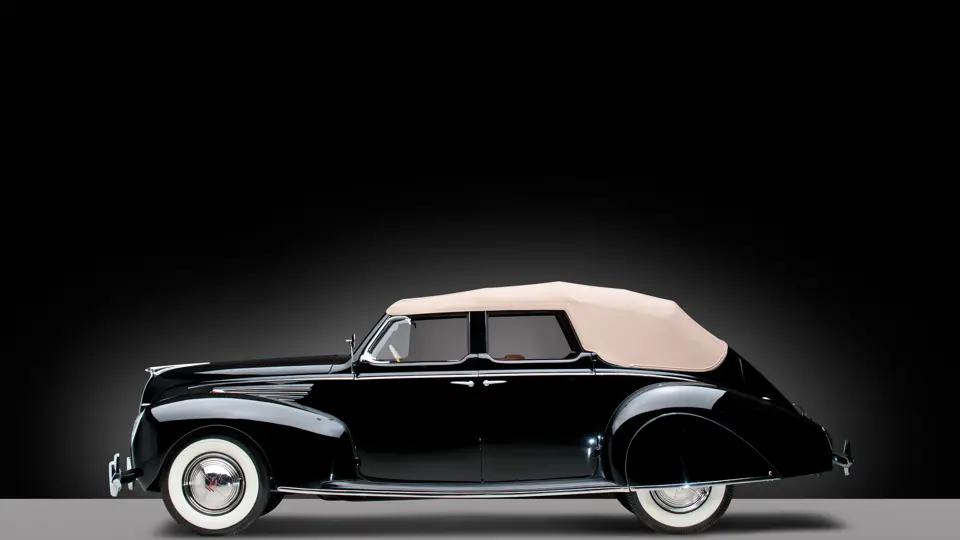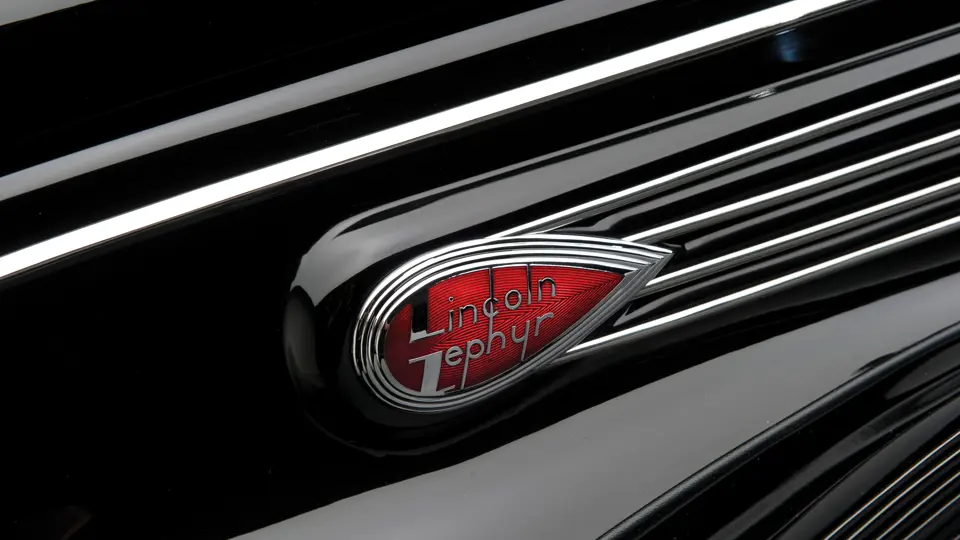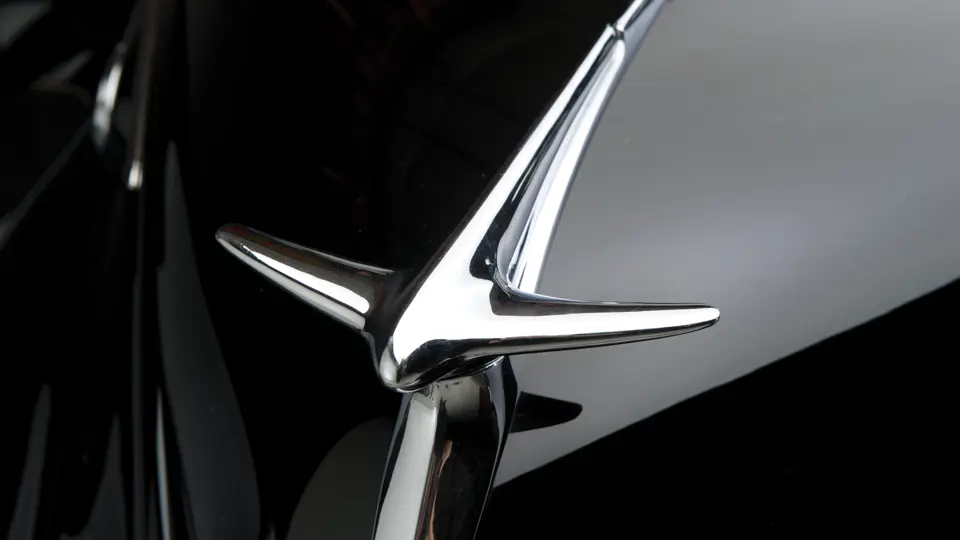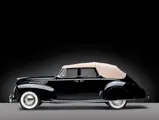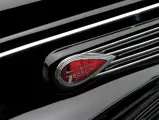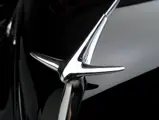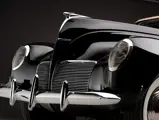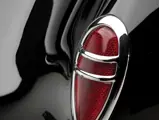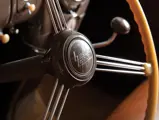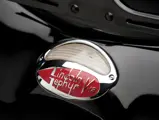MODEL 86H-740. 110 bhp, 267.3 cu. in. L-head V-12 engine, three-speed manual transmission, solid front axle and live rear axle with transverse semi-elliptic leaf springs, and four-wheel mechanical drum brakes. Wheelbase: 125"
The new face on the 1938 Lincoln-Zephyr overshadowed a number of improvements made under the skin. The wheelbase was lengthened by three inches, allowing the engine and transmission to move forward. This in turn increased legroom for the front seat, particularly for the center position, where the configured shift lever was finally removed from the occupant’s lap. Adoption of a hypoid rear axle contributed to lowering the floor by almost an inch and a half.
There were engine improvements as well. Hydraulic valve lifters were adopted, providing quieter operation. Combustion chambers were redesigned, and a Holley-built Chandler Groves carburetor became an alternative to the standard Stromberg unit. There were also internal changes to the transmission. Among numerous changes to the electrical system was the relocation of the battery to the engine compartment, as Ford had done the previous year.
Two new body styles were offered: the 760 three-passenger convertible coupe and the 740 five-passenger convertible sedan. The rigidity that was given up by removing the Zephyr’s roof was compensated for with a cruciform section added under the body. The convertible sedan was unusual in that it retained the four-door’s smooth tail contour, whereas most convertible sedans had a bustle at the rear. Both open models debuted on October 23, 1937 and featured manually-operated, spring-assisted convertible tops. A five-passenger convertible coupe, style 760B, was added later in the year. All Lincoln-Zephyrs shared an unusual spare tire arrangement, in which the tire was mounted on a tilt-out mount, easily swung out to bumper level.
The Dingman Collection acquired this 1938 Lincoln-Zephyr Convertible Sedan from Thomas Brunner, of Rio Verde, Arizona, in 2005. Restored some years ago, it has excellent black paint and a tan canvas top with matching piping. A matching boot cover is located in the trunk. The seats are upholstered in buttoned brown leather; only the driver’s position has signs of use. The floors are covered in brown carpet. A radio is installed in the instrument panel. The odometer reads only 79 miles, believed to be the mileage since restoration. Given its limited mileage, yet professional maintenance, the car remains in superb condition, the way it would have been sold off the showroom floor.
The engine compartment is clean and very nicely detailed. Liberal use of aluminum gives the engine an artistic quality, nicely contrasted with the green of the cylinder block and black of the ancillary components. The undercarriage is painted in matte black, correctly detailed and very nicely presented. B.F. Goodrich Silvertown tires in the 7.00x16 size are fitted to the wheels, which have full chrome caps and trim rings.
The year 1938 was a recession year, and the auto industry suffered. Lincoln-Zephyr sales, which had neared 30,000 in 1937, fell by a third. The convertible sedan, in its first year, managed only 461 units, besting only the town limousine, which was a four-door sedan with a division partition creating a separate chauffeur’s compartment. Viewed in context, however, this falloff in sales was less severe than that of the comparable Packard, but nevertheless, renders the convertible sedan extremely rare. It is an icon of thirties modernism, offered in expertly restored condition.

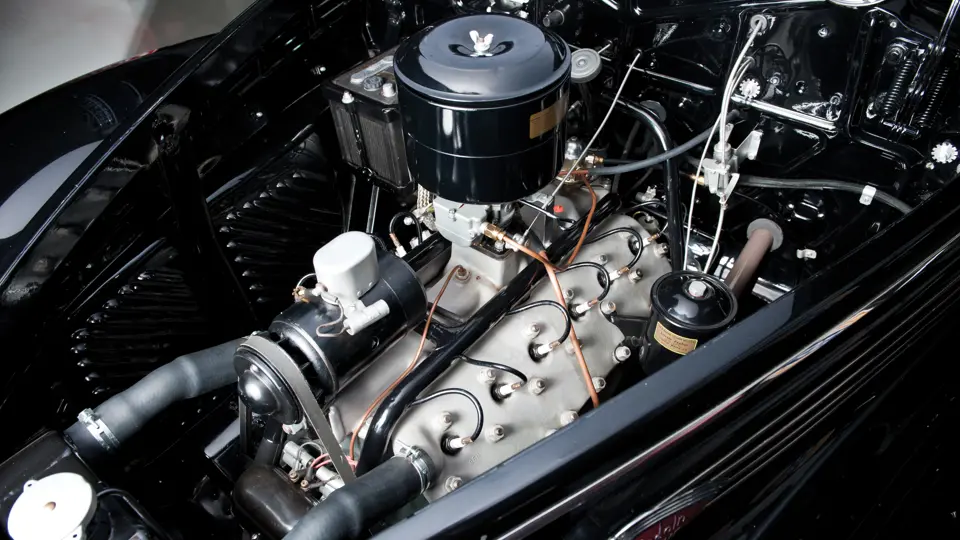
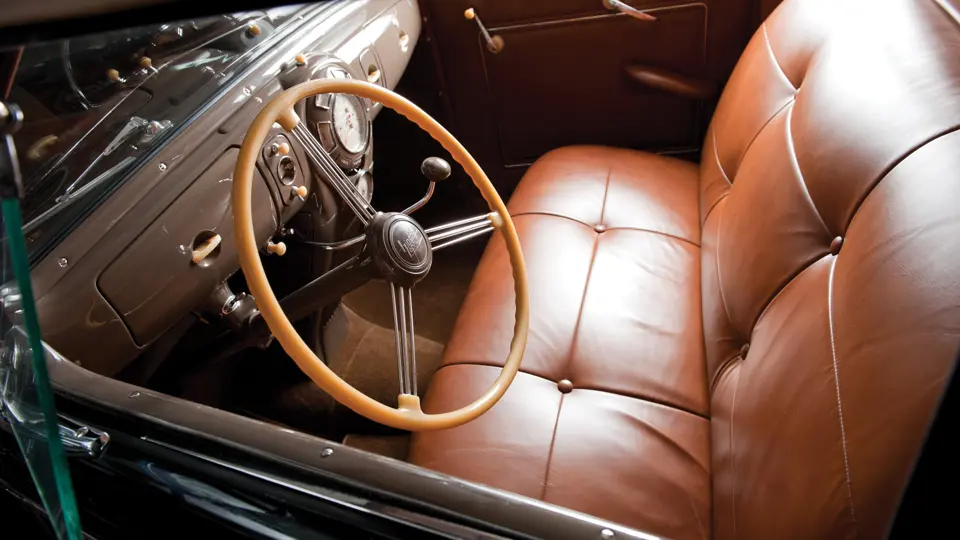

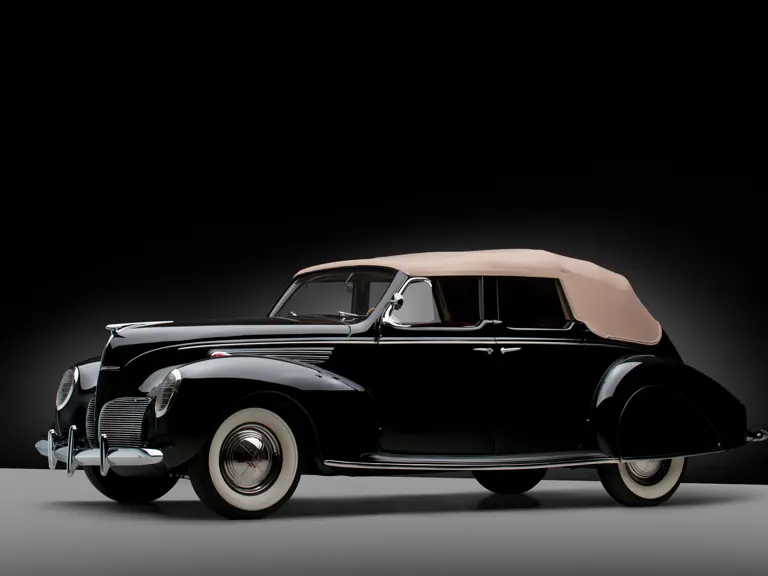
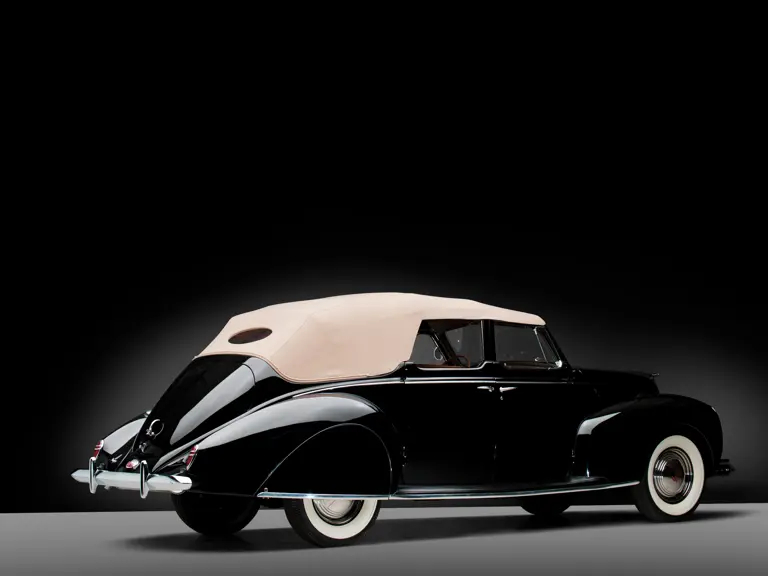
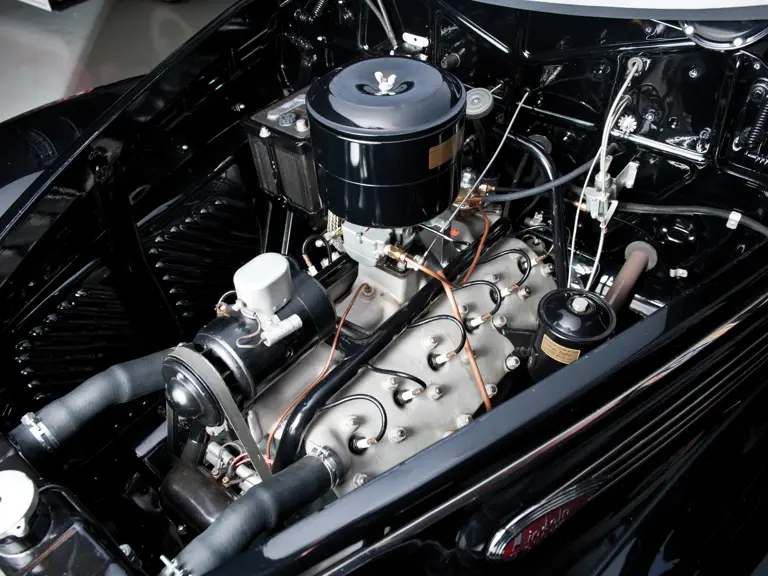
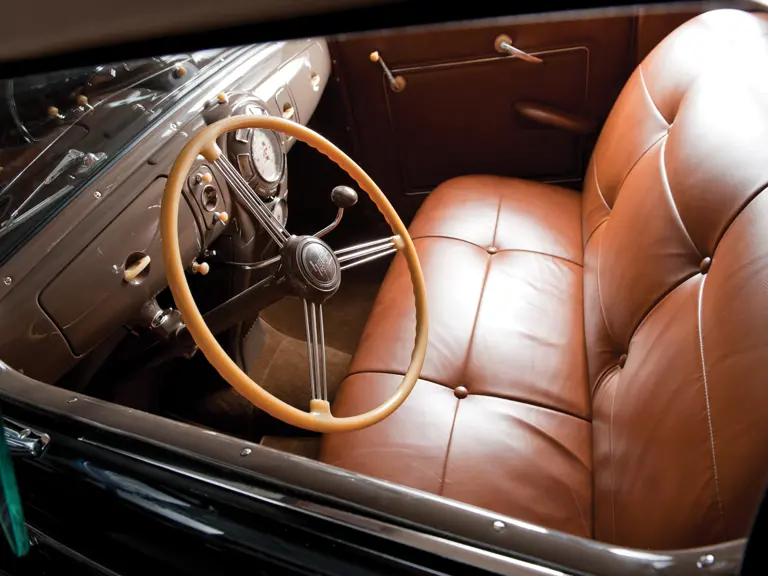
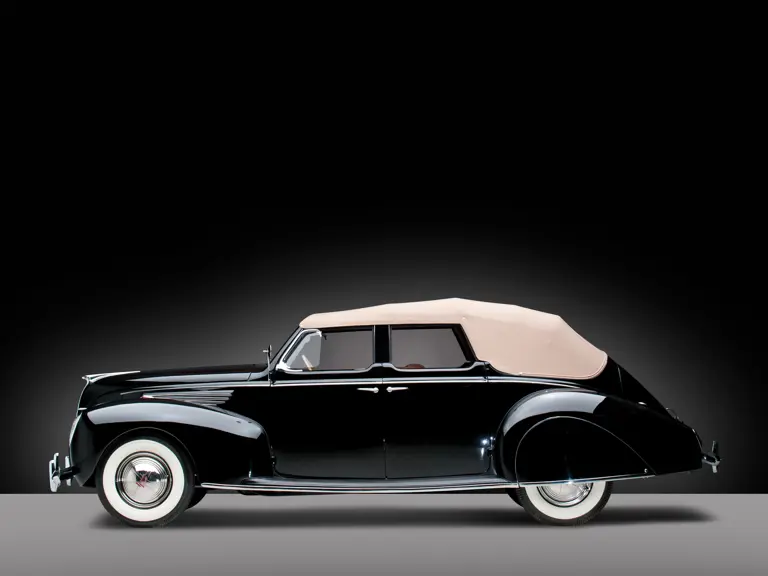
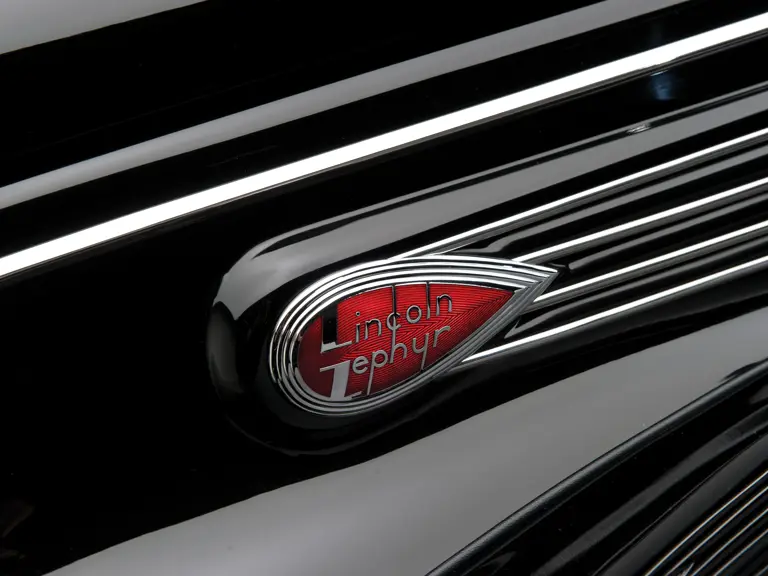
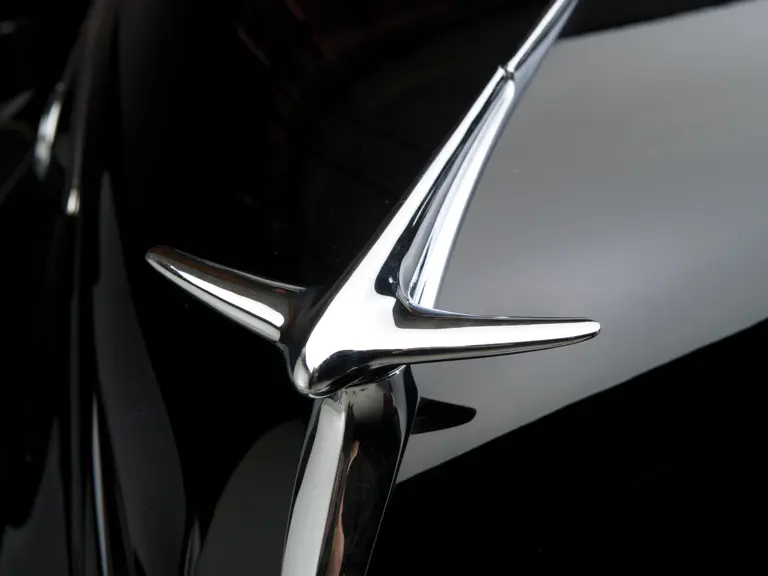
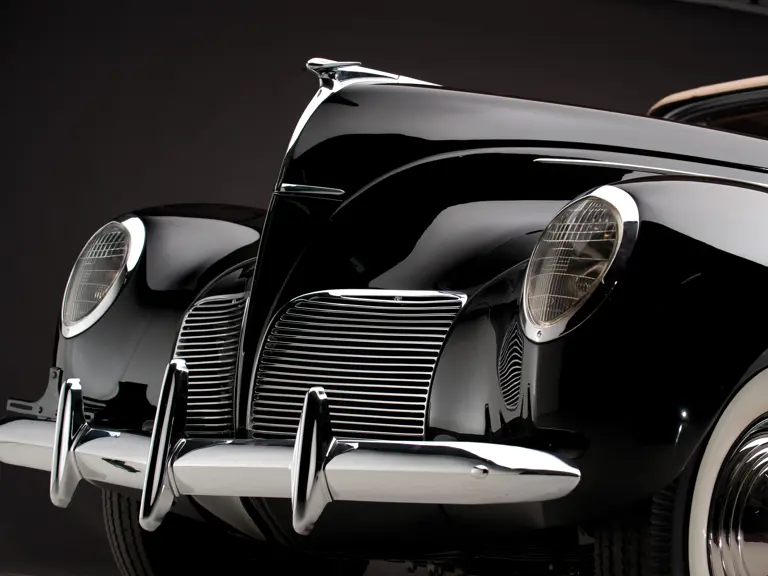
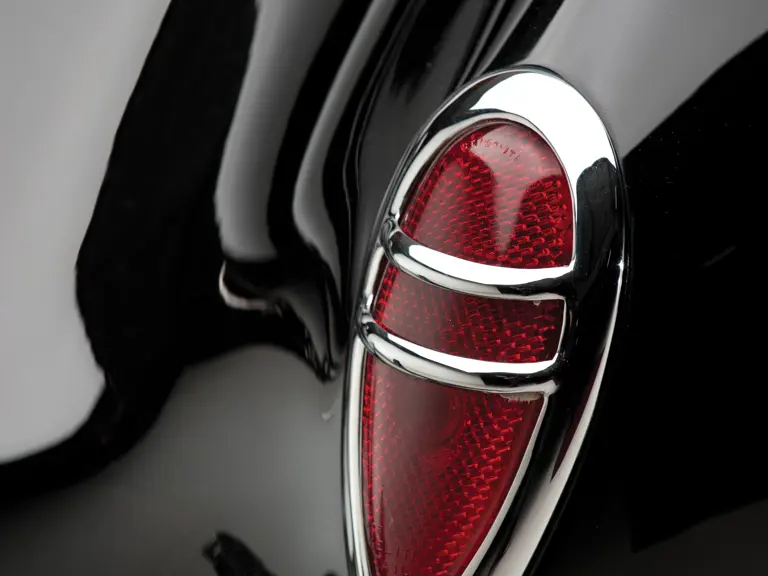
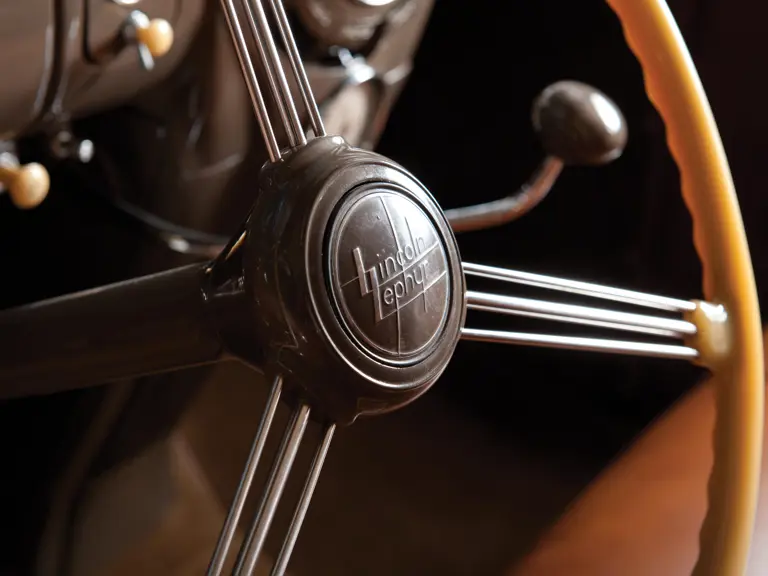

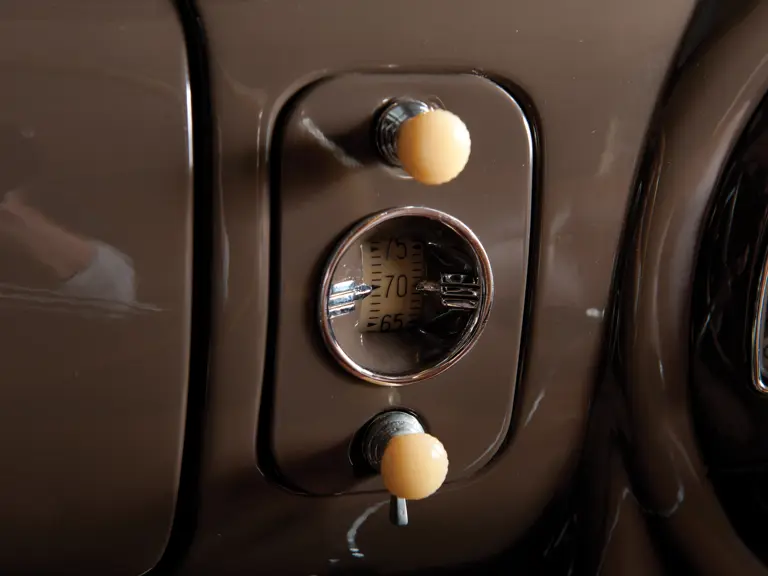
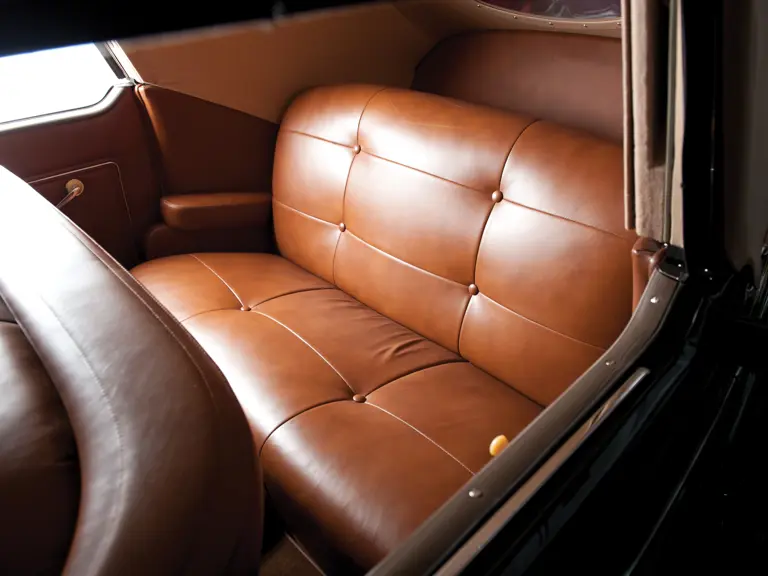
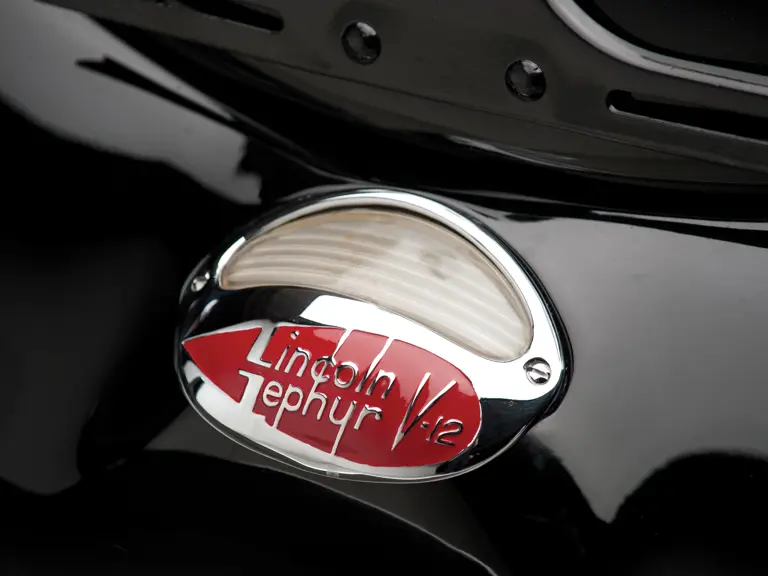
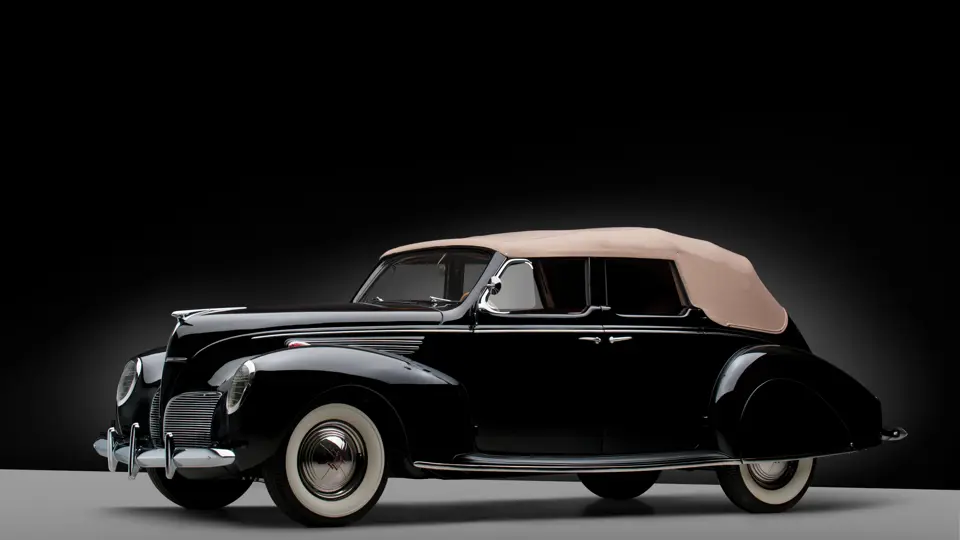
 | Hampton, New Hampshire
| Hampton, New Hampshire
